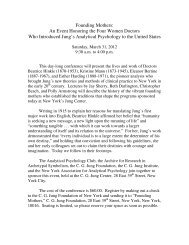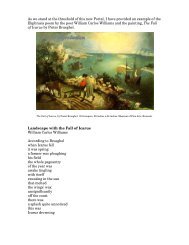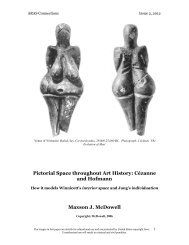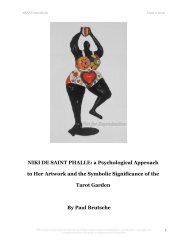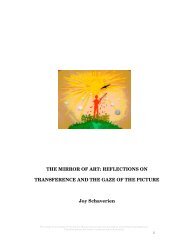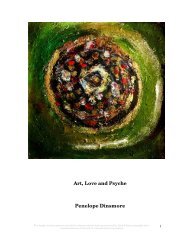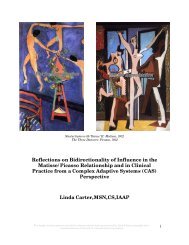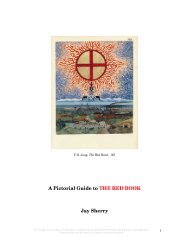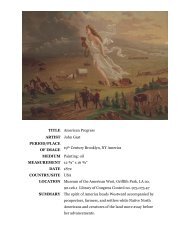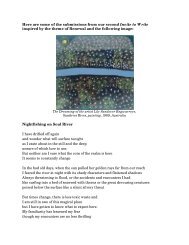The Mandala in Tibetan Buddhism by Martin Brauen - ARAS
The Mandala in Tibetan Buddhism by Martin Brauen - ARAS
The Mandala in Tibetan Buddhism by Martin Brauen - ARAS
You also want an ePaper? Increase the reach of your titles
YUMPU automatically turns print PDFs into web optimized ePapers that Google loves.
Jung nevertheless grasped <strong>in</strong>tuitively a great deal of the deeper mean<strong>in</strong>g of<br />
the mandala ritual, as a few l<strong>in</strong>es from his unfortunate <strong>in</strong>terpretation of a <strong>Tibetan</strong><br />
mandala show:<br />
<strong>The</strong> goal of contemplat<strong>in</strong>g the processes depicted <strong>in</strong> the mandala<br />
is that the yogi shall become <strong>in</strong>wardly aware of the deity;[ that is<br />
to say,] through contemplation, he recognizes himself as God<br />
aga<strong>in</strong>, and thus returns from the illusion of <strong>in</strong>dividual existence<br />
to the universal totality of the div<strong>in</strong>e state. i<br />
This is an observation we can agree with, as long as <strong>by</strong> div<strong>in</strong>e state is<br />
meant not an image of the div<strong>in</strong>e shaped <strong>by</strong> Christianity but rather as<br />
buddhahood.<br />
Why did Jung <strong>in</strong>terpret mandalas as images of the div<strong>in</strong>e? For him,<br />
mandalas were ‘‘real or natural symbols of unity, as they appear to us <strong>in</strong> dreams<br />
and visions,’’ i.e., ‘‘quaternities, or rather multiples of four, or squared circles.”<br />
<strong>The</strong>se ‘‘unify<strong>in</strong>g symbols’’ or symbols of unity:<br />
are usually fourfold and consist of two <strong>in</strong>tersect<strong>in</strong>g pairs of<br />
opposites (e.g. right/left, up/down). <strong>The</strong>se four po<strong>in</strong>ts def<strong>in</strong>e a<br />
circle, which represents the simplest symbol of unity apart from<br />
the po<strong>in</strong>t, which is why it is also the simplest image of the<br />
div<strong>in</strong>e. ii<br />
Thus Jung perceives the central po<strong>in</strong>t, circle and quaternity as well-known<br />
symbols of the div<strong>in</strong>e.<br />
Archetypes?<br />
Carl Gustav Jung also analyzed the function of the mandala, the protective<br />
circle. It seems to him to be ‘‘…the traditional antidote for chaotic states of<br />
m<strong>in</strong>d.” iii He was led to this realization not least <strong>by</strong> some of his patients, who <strong>in</strong><br />
<strong>The</strong> images <strong>in</strong> this paper are strictly for educational use and are protected <strong>by</strong> United States copyright laws. Unauthorized<br />
use will result <strong>in</strong> crim<strong>in</strong>al and civil penalties.<br />
14



